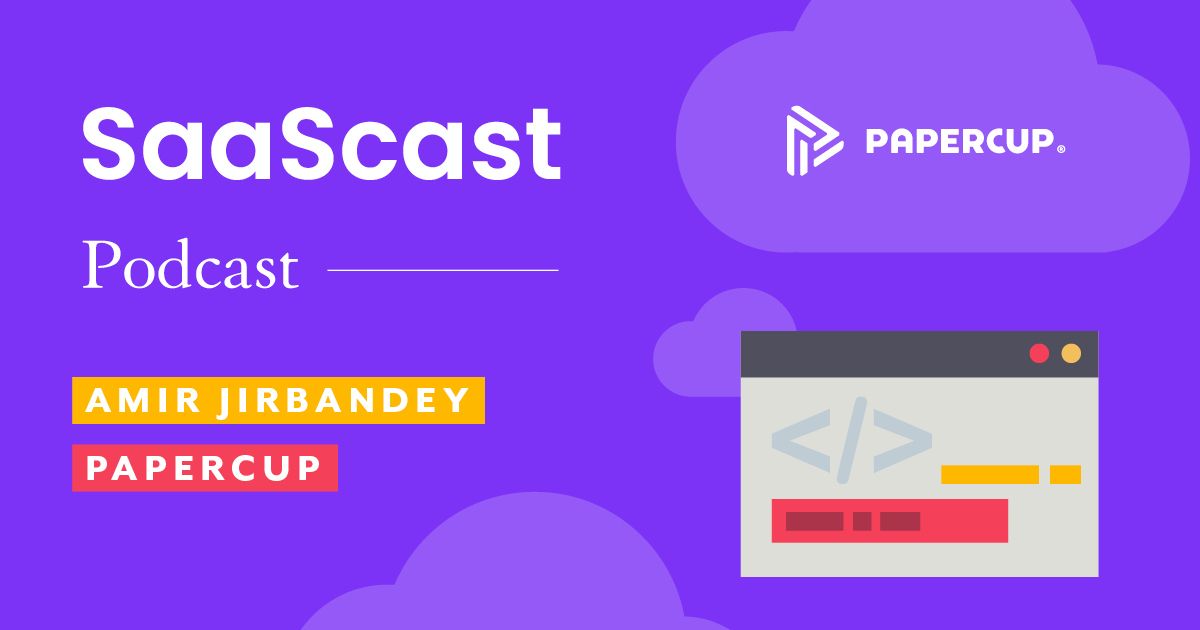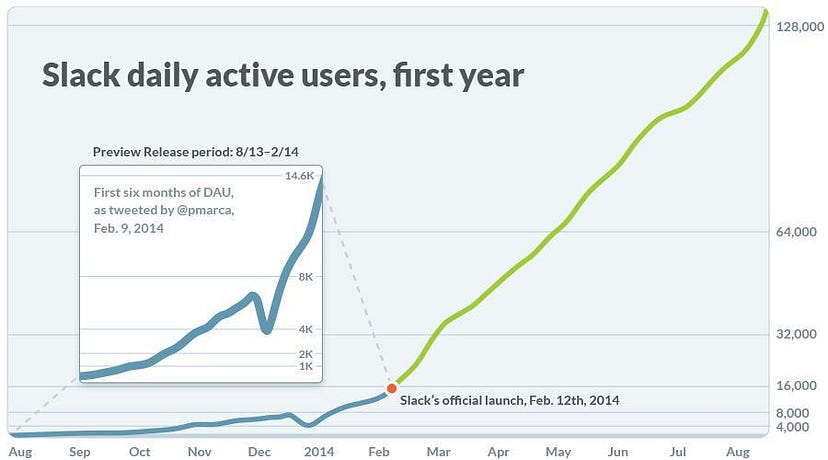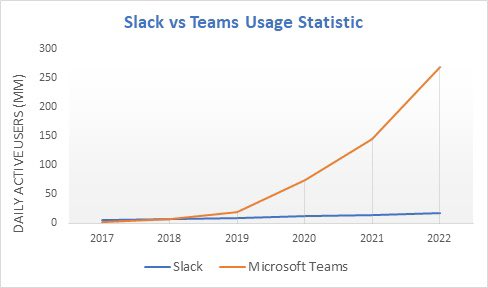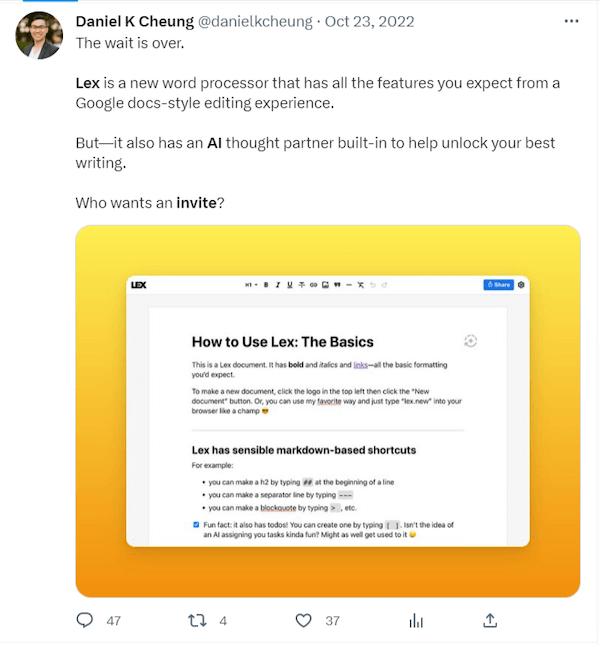Considering the current economic climate, the traditional blueprint for growth — spending significantly on massive marketing campaigns and hiring many salespeople for prospecting — isn’t tenable.
I mean, look around:
Several startups are grappling with cash flow limitations.
VC funding has dipped by 35% in the last year, per Crunchbase.
Inflation is at a 40-year high, forcing central banks to increase their lending rates.
And the World Economic Forum (WEF) predicts a global recession is on the cards in 2023.
In fact, 185136 employees were laid off from 629 companies in the first quarter of 2023. That’s already 13% above the total number of employees laid off in 2022. And we’re not done with 2023 yet!
But you still need to grow. Besides, it's been proven that brands only grow by selling to new customers.
Not cross-selling. Not loyalty programs. Only by selling to new customers.
So, what’s a low-cost, low-risk, high-reward method for gaining customers within a short period of time? CAC.
Growth hacking.
Below, I'll reveal what growth hacking is, the pillars it's hinged on, and end with some hacks you can implement immediately.

A little bit about growth hacking
Growth hacking is simply using innovative, creative, low-cost techniques to attract many potential customers and strengthen brand name recognition within the shortest time possible.
In most cases, these techniques are experimental. And the main goal is to be disruptive enough to capture attention, attract customers, and give them enough reasons to tell others about the product or service.
Growth hacking was coined by Sean Ellis, founder of growth hackers, in 2010. He also wrote a book on the subject.
It has since gained popularity, particularly among early-stage startups without large companies' marketing and advertising budgets.
Is growth hacking the same as growth marketing?
This is an ongoing debate.
While researching for this blog post, I still found some publications using both interchangeably. It’s like a hit song, where everyone has a different variation of the lyrics.
However, they are miles apart. The only similarity is that they are data-driven, goal-oriented, and iterative.
Also, their success depends on the potential of the product. If it’s meh, then no growth hack or marketing will work. If it’s splendid, the hack or growth marketing strategy has a 50% chance of succeeding.

So, what are the differences?
The definition of growth marketing should give some hints.
Growth marketing is using data-driven, iterative strategies to attract “ideal” customers and engage and nurture them into loyal ambassadors. It incorporates both brand and performance marketing.
Drawing from the definition, the differences are:
The goals are different
Whereas growth hacking focuses majorly on customer acquisition (revenue generation), growth marketing combines performance and brand growth.
Performance growth in terms of lead, sales, and revenue generation. And brand growth, in terms of brand awareness, differentiation, and positioning.
The timeline for achieving results differs
For growth hackers, their focus is to achieve rapid growth.
In contrast, growth marketers think long-term. They focus more on sustainable, repeatable growth than engineering short-term growth spikes.
They attract the prospects, engage them until they become customers, and continue engaging them until they become loyal brand ambassadors.
Growth hacking is a sprint. While growth marketing is a marathon.

The target companies are different
Growth hackers majorly serve early-stage startups yet to have a solid customer base. Sometimes, they’re yet to achieve product-market fit. Instead, they generate a buzz to attract users to the minimum viable product (MVP).
In contrast, growth marketers work with medium-late stage startups, with an existing customer base and a history of meeting their needs. These companies have already achieved a product-market fit.
One is a strategy, the other is a tactic
Growth marketing is a strategy. But growth hacks are simply techniques.
Think of it this way.
You can adopt a growth marketing strategy to grow your startup. Then your tactics – growth hacking — will include AB testing and content marketing. And more.
Target audience differs
Growth marketing and growth hacking target large and narrow ranges of audiences, respectively.
Here’s what I mean:
Growth hacking is like fishing with a net — you have no target profile. And that’s because, in most cases, a B2B company will employ growth hacking but won’t have an ideal client profile or a buyer persona yet.
So, they’re willing to use low-cost techniques to target just about anyone and announce their presence.
On the other hand, growth marketing is like fishing with a hook — you create strategies focused on attracting and retaining customers that fit your persona or ideal customer profile. That’s why it’s great for medium-large scale startups.
Their source of inspiration differs
Growth hackers rely primarily on creative thinking, intuition, and knowledge of the internet and various tools.
On the other hand, growth marketers dive knee-deep into customer research, understanding the product, and product research. After that, they craft a long-term strategy to convince the ideal customer that their product or service solves their problem better than a competitor's.
Or they might scale up a growth hack that worked in another channel.
Even though they differ, growth marketing and growth hacking can work in tandem.

Why should you use growth hacks?
It’s Cheap
Traditional marketing strategies cost a lot to execute. Yet, they may flop or take time to yield results. And as an early-stage startup, you can’t afford to wait.
Enter growth hacking.
Growth hacks cost next to nothing to create and execute. All that’s required is the creativity to come up with the idea, a willingness to execute it, and a system to monitor the results.
Takes advantage of the tendency of customer behavior to change
Customer behavior, like human behavior, changes continuously. Hence, the strategy that was a hit yesterday may be a miss today.
As a marketer, you’re always tasked with creating new campaigns capable of arousing a positive response from the present-day customer.
And trust me, it’s no mean feat.
The spontaneity associated with growth hacking allows you to quickly assess current customer behavior and develop out-of-the-box strategies.
This can give you a leg up over competitors, who may still be reusing the same old tricks.

Can become ground-breaking, scalable strategies
Some growth hacking strategies become a hit. And when that happens, you can scale it and use it to form the foundation of the broader marketing strategy of your company.
Even when the growth hack doesn’t pick up, you could get valuable insights into customer behavior to create a new marketing strategy.
Core foundations of growth hacking
Creativity
Growth hacking mainly involves techniques and strategies that have not been used before. Because growth hacks have short life spans.
A hack that worked yesterday may not be effective today. Maybe it's been overused. Or customers have caught onto it.
You can, however, re-engineer a past hack and use it to develop a new strategy.
For instance, say you come across a new startup strategy. Trying to reuse it isn’t the best idea. Rather, break it down and discover:
- Why is it working?
- What does it take advantage of?
- How should it have been done better?
Your answers can form the building blocks for a new hack.
Paying attention to trends is another way to stimulate creativity. Trends that relate to your industry and those that don’t. Because, like an artist, you can never predict what may inspire your next campaign.
Working backward from the audience’s standpoint works too.
What are they watching? Who are they listening to? Where do they hang out? What’s their nagging challenge as it relates to your product or service?
After you’ve come up with a hack, be bold to try it out, even if it’s novel.

Set goals
You can’t execute a hack in a vacuum. There should be a goal, which serves as a touchstone to measure your success. Once you set goals, you can focus your efforts better and reference points to judge the success of your campaign.
It's like setting a destination before you start a journey — you need to plan out your route, ensure you have the right resources, and be prepared to make adjustments to reach your predetermined destination.
Tip 1!
To ease goal-setting, follow the SMART framework.
Let’s use these two goals to explain the framework.
“I want to increase traffic” is goal A.
While…
“I want to increase traffic by 20% within 3 months by creating content and optimizing it for search engines, sharing in communities, and collaborating with influencers” is goal B.
- Specific: Goals should be concrete and clearly defined, so that you can clearly understand what you wish to achieve.
For a goal to be specific, it should have the particular metric it covers, the tactic to be used, and the resources or tool it will consume.
This means goal B is specific. It captures the metric (traffic), the amount (20%), time (3 months), and the tactic to be used.
- Measurable: There should be numerical targets so progress can be tracked. This serves as a benchmark for success and ensures that you strategy is data driven.
Unlike goal A, goal B has a numerical (20%) target to measure the key performance indicator (traffic). So you can know when you’ve achieved the goal.
- Achievable: Goals should be realistic and achievable with the resources available.

You don't want it to seem too easy that you won't put in the effort. Or too difficult so that your morale takes a hit when it doesn’t pan out.
How do you know if a goal is achievable?
As growth hacks usually involve novel strategies, there is no benchmark for determining whether a goal is achievable. So, you have to rely on your intuition and current trends.
- Relevant: Goals should be relevant to business objectives. Say the business wants to get 500 thousand users by the end of the quarter. Then your goal should tie into that objective.
- Timely: A timeline with a defined end date should be set to keep goals on track. For instance, goal B has an end date of 3 months. This gives focus.
Know the product or service offering
I once stepped into a clothing store to buy pants.
Unsure of which to choose, I asked the retail clerk to suggest the best pants, per my physique and budget. He drew blanks.
As you would expect, I didn’t buy it.
Deep knowledge of the product helps you identify its unique strengths and aids in creating targeted marketing messages and materials that will resonate with the target audience, which will give you a greater chance of boosting your conversion rates and growing your business.
It also gives you a strong understanding of the customer journey, which is going to help you to retain your customer base.
There are three ways to grow your knowledge of the product:
- Take a product demo
- Get close to the product team and seek input from them
- Explore the tool on your own
Once you know the product, hitting business objectives with your growth hack becomes easier.
Measure
After you deploy a growth hack, monitor its progress.
It tells you which strategies are driving growth and identify those strategies you’re supposed to optimize to achieve even better results.
Additionally, it eliminates the guesswork. This way, you’d make decisions with a high potential for positive results and discover areas of opportunity and potential campaign weaknesses.
First and foremost, identify the metrics most important to you. It all depends on the goals you’ve set for the campaign.
Once that’s done, the next step is to select the tools to track and measure the metrics. The tool you choose depends on the metric in question.
For example, Google Analytics can be used to track website traffic and user behavior, while A/B testing tools can be used to test different versions of landing pages or ad copy.
Master tools and APIs
A little walk through history...
Growth hacking started with tech startups, with no background or knowledge whatsoever of traditional marketing. Hence the reliance on tools and API.
This includes Link scraping tools, lead generation software, no-code platforms, API integrations platforms like Zapier, etc.
The tool you use depends on your objective and marketing channel.
For instance, web analytics tools are for content marketing campaigns. At the same time, social listening tools work for social media campaigns.

Examples of growth hacking strategies you can implement
Popl’s leveraging of an underutilized social platform
Social media is the most popular growth channel for startups, and the most effective channel for attracting customers, per Campaign monitor.
That’s because in most cases, strategies executed using social media platforms yield massive results. And the template is similar: become viral on social, grow a dedicated audience, and watch the revenue pile in.
But the problem is almost every startup uses the same channels.
According to Hubspot, most businesses use Facebook, Instagram, and Twitter.
That doesn’t mean it’s impossible to win on these platforms. But you’d have to put in the extra effort.
What if you could find an underutilized platform, and earn a first-user advantage?
Well, that’s what Popl did. And it bore astounding results!
Popl, a provider of NFC-based digital business cards, got in on the Tiktok trend in its early days.
They created a single video to promote their product and posted it on the platform. And in under 24 hours, it raked in over 10 million views, and their inventory was exhausted in 3 days.
Their videos on Tiktok are raking in an average of over a million views. Sounds outrageous, right?
But why did it work?
Firstly, Tiktok was underutilized by many businesses. But they saw the opportunity, tried it out, and gained results.
Secondly, their ideal audience (young business people) used the platform.
So, instead of moving with the herd, keep a look for a platform that’s underutilized. Investigate if your customers are there. If yes, incorporate it into your strategy.

Slack’s utilization of word of mouth to generate virality
Word of mouth is a very potent marketing strategy. Data proves it:
- Word of mouth is responsible for $6 million worth of sales globally. That’s 13% of all global sales. (Semrush)
- 92% of customers have more trust in product recommendations from a friend. (Nielsen)
- 88% trust a brand better, when the recommendation comes from a friend. (Semrush)
It’s no wonder Slack leveraged this form of marketing to huge success.
Before 2014, few people knew about Slack. But once they launched using word-of-mouth marketing, they grew by 1500% within a year! And a year later, they recorded 285,000 active users!
But that’s the least of it….
Slack recorded over 1 million daily active users two years after its launch.

So how did they pull this off?
Firstly, they gave people access to try out the “preview release” version of the product. Within 24 hours, 8,000 people signed up.
First-time sign-ups raved about how amazing the product was, and how it helped cut down their email communication. They told their friends and colleagues who signed up too. And the number continued to trend upward from there.
In fact, the current daily active users (DAU) on Slack, far exceed those on Microsoft Teams. Utilizing free trial versions of your product in order to get the word out about your product can be a very useful tool and start to establish brand awareness.

Lesson here?
Build your product to fulfill a pressing challenge of your target customers. Give free access. And sign ups will recommend your product to their friends, family members, and colleagues.
Some companies have even found success by incentivizing this behavior through referral programs. In this instance, customers will be rewarded for recommending the product to people they know.
Word of mouth through social sharing can also be very potent. If professionals are singing the praises of your solution through linkedIn, for example, it can potentially reach a broad range of potential users in a relatively short amount of time.
Lex leveraging the fear of missing out (FOMO) to drive sign-ups
FOMO is a psychological response that makes us fear that we're missing something good.
It's a potent B2B marketing strategy used by many businesses.
For example, businesses promote exclusive events and limited-time offers to spark fear in their customers that they may miss out on something great if they don't act quickly.
And that’s why many startups, like LEX, use it to generate buzz for their product or service.
When LEX launched, they gave early access to people who signed up to join the waitlist. And these new signups were allowed to invite five (currently ten) other friends to use the product.
This “invite-only” system stirred up urgency. In fact, people were advertising free invites on Twitter! Wild, right?

By tapping into the power of FOMO, they created a sense of excitement and urgency around their product, which ultimately helped drive sign-ups and grow their user base.
Apply growth hacking to your startup
You can go ahead and apply growth marketing to your company.
First, have an idea of the audience you wish to target. Get a solid understanding of your product and its unique selling proposition. Then ideate a growth hacking strategy.
You could use strategies used by other companies. Or you could take time out to craft one.
Like what you see? Why not check out exclusive content from the leading minds in SaaS with a FoSaaS membership plan?





